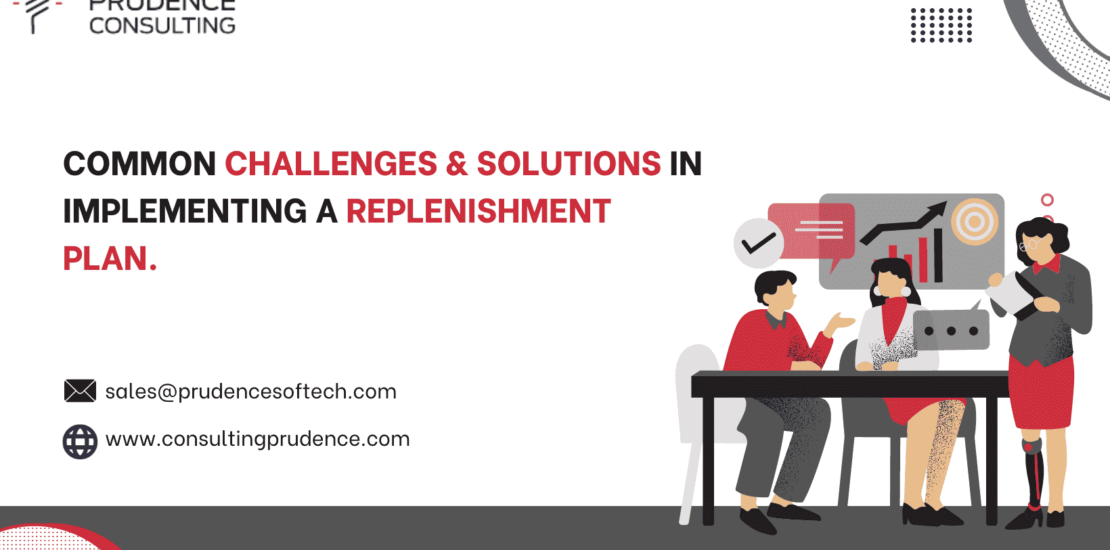Common challenges & Solutions in implementing a replenishment plan.
-
October 5, 2023
- Posted by: piyush.gupta@prudencesoftech.in
- Category: Microsoft Dynamic 365 Business Central
No Comments

- October 5, 2023
- Posted by: piyush.gupta@prudencesoftech.in
- Category: Microsoft Dynamic 365 Business Central


In the world of supply chain management, implementing a replenishment plan is a critical step to maintain inventory levels, meet customer demand, and optimize operations. However, like any complex process, it comes with its own set of challenges. In this blog post, we will delve into the common hurdles faced when implementing a replenishment plan and how to overcome them.
- Data Accuracy and Quality
- A replenishment plan relies heavily on accurate and reliable data. Inaccurate data can lead to overstocking or understocking issues. Ensuring that your inventory records are up-to-date and precise is a fundamental challenge.
- Solution: Invest in robust data management and integration systems. Regularly audit and cleanse your data to maintain its quality.
- Demand Forecasting:
- Accurately predicting customer demand is an ongoing challenge. Fluctuations in market trends, seasonality, and external factors can make it difficult to determine how much stock you need.
- Solution: Use advanced forecasting tools, historical data analysis, and consider collaborating with suppliers and distributors to improve demand visibility.
- Supplier Relationships:
- Dependence on external suppliers can introduce delays and inconsistencies in the supply chain. Managing supplier relationships to ensure timely deliveries is crucial.
- Solution: Establish clear communication channels with suppliers, set performance expectations, and consider alternative suppliers for critical components.
- Inventory Optimization:
- Striking the right balance between carrying excess inventory and experiencing stockouts is a constant challenge. Overstocking ties up capital, while understocking can result in lost sales and dissatisfied customers.
- Solution: Implement inventory management software that provides real-time visibility into inventory levels and incorporates demand forecasting.
- Lead Time Variability:
- Suppliers may have unpredictable lead times due to various factors such as transportation delays, customs, or manufacturing issues.
- Solution: Build safety stock to cushion against lead time variations and work closely with suppliers to improve lead time reliability.
- Technology Integration
- Integrating your replenishment plan with other systems like Enterprise Resource Planning (ERP) or Warehouse Management Systems (WMS) can be challenging.
- Solution: Invest in flexible and scalable software solutions that can seamlessly integrate with your existing technology stack.
- Change Management
- Implementing a replenishment plan often requires changes in organizational processes and culture, which can be met with resistance from employees.
- Solution: Engage in change management strategies that involve and educate employees about the benefits of the new replenishment plan.
Conclusion:
Implementing a replenishment plan is a critical step in achieving an efficient and responsive supply chain. However, it’s not without its challenges. By addressing issues related to data accuracy, demand forecasting, supplier relationships, inventory optimization, lead time variability, technology integration, and change management, organizations can overcome these hurdles and build a supply chain that is resilient and agile in the face of evolving market dynamics.


